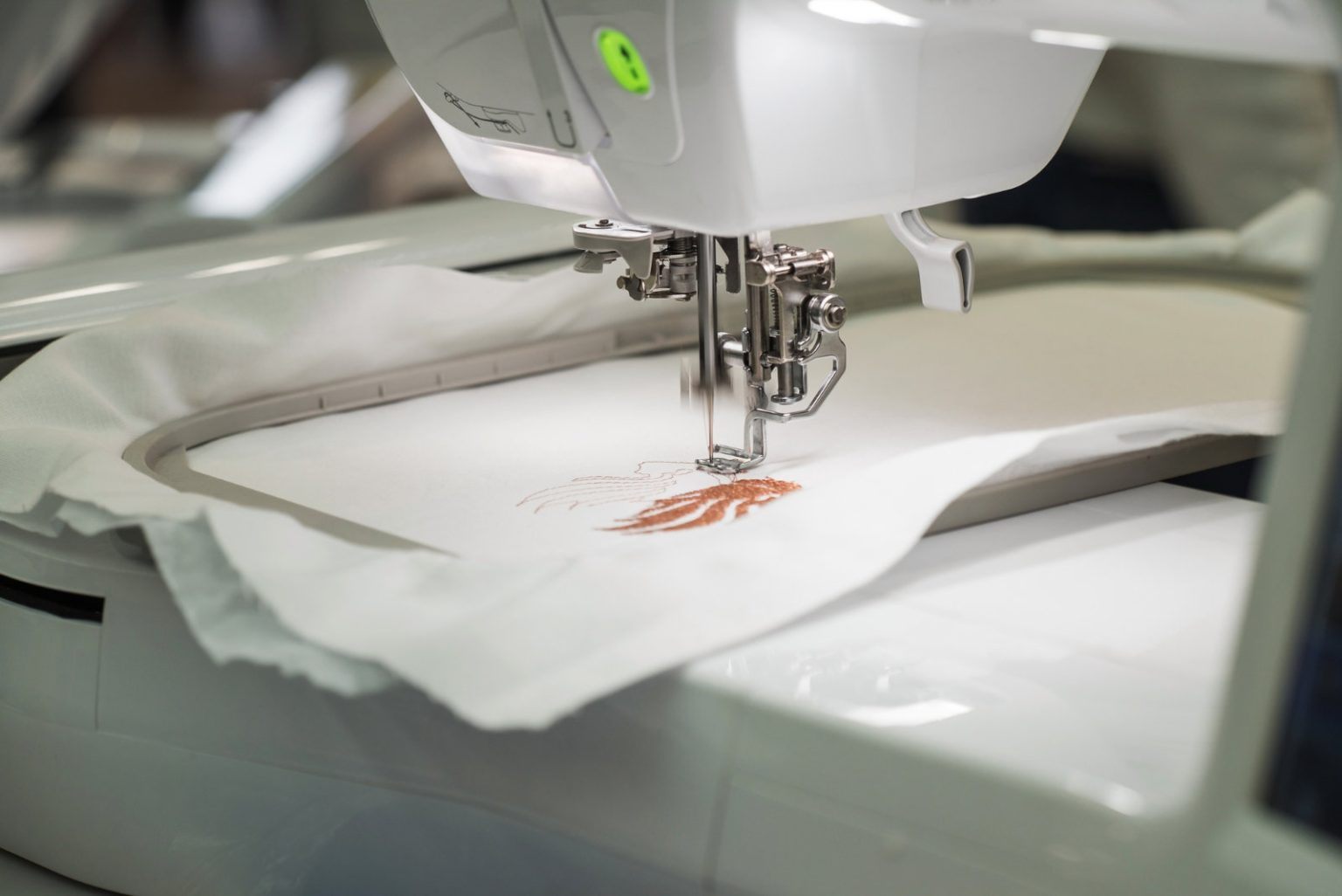Beautiful embroidery requires more than skillful technique and high-quality fabrics. Below is everything you need to know about embroidery stabilizers and how they can help you improve your next embroidery project.
Q: What Is an Embroidery Stabilizer?
An embroidery stabilizer is a piece of paper-like material designed to reinforce embroidery. You place it in your embroidery machine beneath the embroidered fabric, hooping them together as you sew. This backing “stabilizes” your embroidery and makes the stitches crisp and durable.
If you want your embroidery project to look its best, get the right embroidery stabilizer. Stabilizers provide the necessary support to keep stitching in line and prevent damaged material in the future.
Q: Why Are Stabilizers Important?
At first, it might seem like a waste to add a backing. However, this material is essential to creating beautiful, long-lasting embroidery. Without the needed support from embroidery backing, you may encounter these problems:
- Puckered, distorted fabric
- Loose stitching
- Off-registration stitches
- Damage during the wash
If you don’t want to risk ruining your embroidery, use a proper stabilizer – not coffee filters, wrapping paper, paper towels, parchment, etc. Embroidery stabilizers help your hard work pay off with quality results.
Q: How Do You Make Stabilizers?
You can make stabilizers in a couple of different ways:
- Dry-laid. Stabilizers that use either carded saturate or random during the manufacturing process are dry laid. These might work great for sewing interfacing, but we don’t recommend them for embroidering.
- Wet-laid. The manufacturing process for wet-laid stabilizers is similar to that of fine paper. Wet-laid stabilizers don’t stretch, but you can tear them in multiple directions, making them ideal for embroidery.
Q: Which Embroidery Stabilizer Should I Choose?
It’s vital to choose the right stabilizer for your embroidery. Not all backings are the same, so selecting the best option will help your sewing project turn out flawless. As a rule of thumb, choosing the proper embroidery stabilizer depends on a few factors:
- The number of stitches in your embroidery
- How many stitches there are per square inch
- The stretchiness of the embroidered material
The backing must remain tightly fixed to the other fabric. If it’s not, the material can move and shift, causing significant issues for your embroidery.
Additionally, consider a stabilizer that’ll feel comfortable. An embroidered shirt should look nice and feel great when you wear it, not one or the other. Think about the stabilizer’s weight and texture and how it might drape to make a good choice.
Q: What Types of Stabilizers Are There?
There are several different types of stabilizers. Each has a specific design and function, so learning these differences can help you determine which to use and when. You have three basic types of embroidery stabilizers:
- Tear Away
- Cut Away
- Wash Away
Type #1. Tear Away Stabilizers
Tear Away stabilizers have varying weights depending on your stitch count and stitch density. These stabilizers tear away cleanly, saving you time, unlike cutting them with scissors.
Pro tip: For woven fabrics that don’t stretch (towels, napkins, leather vinyl, cuffs, collars, etc.), use a Tear Away stabilizer.
Type #2: Cut Away Stabilizers
Cut Away stabilizers have long fibers, guaranteeing tight, secure stitching that stays in line and doesn’t ruin in the wash. If embroidery is your casual hobby, we recommend using this backing for most projects. It’s easy to sew with and cuts away effortlessly.
Pro tip: If you’re using stretchy fabrics for embroidery and want long-lasting, beautiful results, go with Cut Away backing. This stabilizer can withstand regular wear-and-tear and frequent washing.
Type #3: Wash Away Stabilizers
Wash Away stabilizers consist of material that dissolves in water, leaving no shadows or leftover fibers. Not sure if your stabilizer is water-soluble? Run it through different types of water and other liquids to see if it disappears—some stabilizers dissolve it better than others.
Pro tip: A Wash Away stabilizer works best for freestanding lace, sheer fabrics like organza, and quilted designs.
Top-Quality, Customizable Embroidery Designs
Do you want your embroidery stabilizer to back a professional-grade, custom design? At Affordable Digitizing, we provide vector art conversion and digitizing services at competitive pricing options. Get in touch today!

